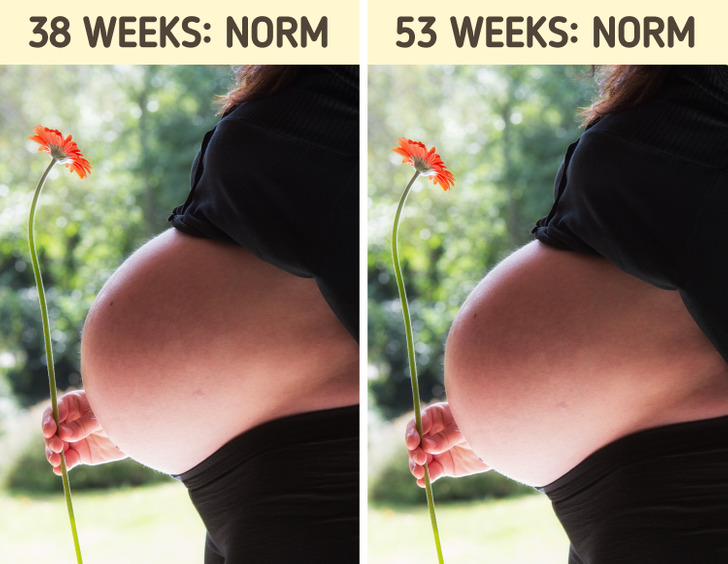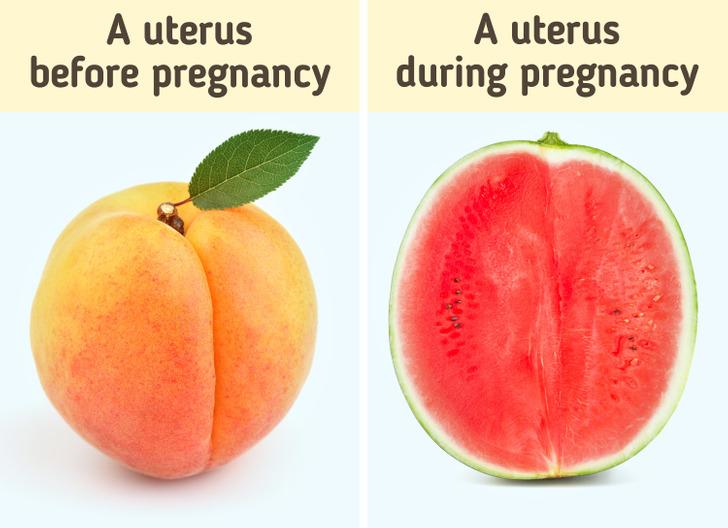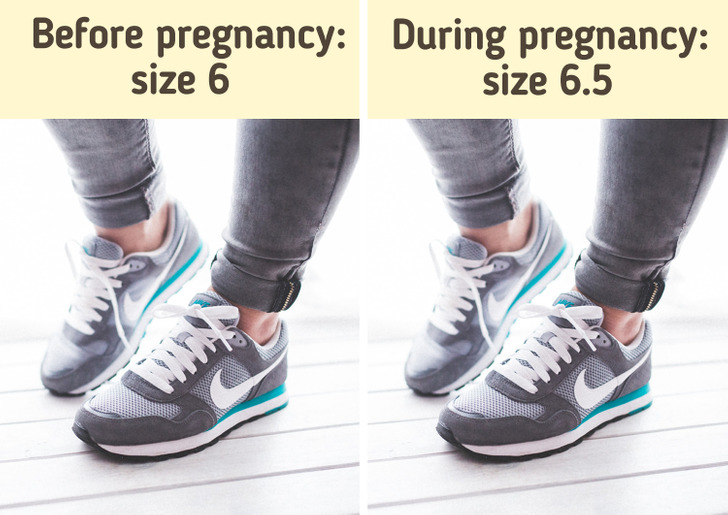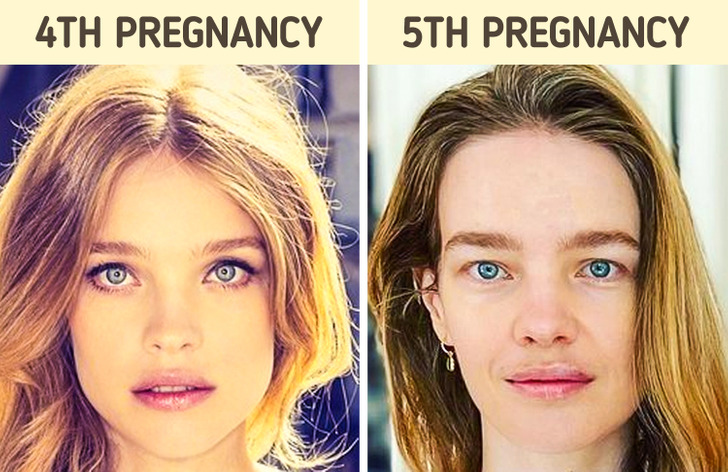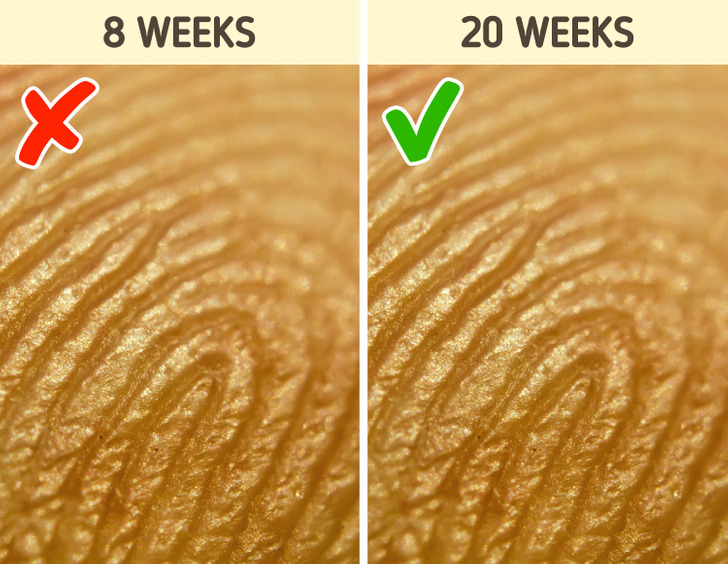Thank you for this. I have a scan of my daughter at 13 weeks on August 8th. She was born on April 23rd. I did not miscarry and start again. Same baby - long pregnancy.
9 Strange but Very True Facts About Pregnancy That Doctors Rarely Talk About
Health
7 years ago

What do we know about pregnancy? Nausea, back pain, unusual food choices — all of these are well-known facts about pregnancy. But do you know, for example, that unborn babies can cry? Or that the widespread belief that newborns don’t have kneecaps is just a myth? Are you ready to face the fact that pigment spots might appear on your face and body?
Bright Side put together the most remarkable facts about pregnancy and newborns which neither your mother friends nor your doctors will tell you about.
- Carrying a baby in the womb for a whole year is not a myth. Normally pregnancy, from the moment of conception to the moment of childbirth, lasts for 266 days, or 38 weeks. However, in reality this number can be bigger or smaller. For example, Beulah Hunter was pregnant for an entire 375 days. Her fetus grew slower than usual that was why her pregnancy took more than a year, but eventually a healthy girl was born.
- During the second half of pregnancy, the fluid inside the mother’s belly is almost entirely comprised of the fetus’ urine, which they later swallow.
- A uterus grows 500 times bigger than normal during pregnancy, but after childbirth, it can become smaller or bigger than its original size. The uterus before pregnancy is about the size of a peach, and by the end of the pregnancy, it reaches the size of a watermelon.
- A woman will produce more estrogen during pregnancy than in her entire life if she never gives birth.
- During pregnancy, a woman’s waist and breasts are not the only things to grow in size, but her feet will as well. There are a few reasons for this: excessive liquid accumulation in an expectant mother’s body, joints softening due to hormonal changes, increased pressure on the foot arch due to increased weight.
- Babies can cry in their mother’s womb, even before they are born. They develop this ability in the third trimester and crying usually happens in response to a low-decibel noise played on the mother’s abdomen. Video-recorded ultrasound images show babies displaying crying behavior, like opening their mouths, depressing their tongues, and taking several irregular breaths before exhaling.
- A frequent “companion” of pregnant women is pigmentation. 90% of mothers encounter this problem. Specific spots might appear on their faces, especially in the areas of the forehead, nose, chin, cheekbones, and eyes. The color of this pigmentation depends on the mother’s initial skin color: fair skin becomes darker and dark skin becomes lighter.
- Babies’ fingerprints begin to form by the sixth month of gestation. Once they are formed, they will not change until the end of their life.
- An unborn child can feel, taste, and smell food that its mother consumes. They are absorbed by amniotic fluids and can form a future person’s food preferences.
Pregnancy is an amazing time when a woman’s body goes through transformations that are hard to imagine. Which facts did you find the most surprising? Tell us in the comments below.
Please note: This article was updated in August 2022 to correct source material and factual inaccuracies.
Comments
Get notifications
Lucky you! This thread is empty,
which means you've got dibs on the first comment.
Go for it!
Related Reads
20 Girls Who Just Cut Their Bangs but Look Like They Got a Plastic Surgery

Curiosities
5 years ago
15 Times Small Acts of Kindness Made a Giant Difference

Curiosities
2 months ago
10 True Stories That Prove Kindness Is Quiet — but Stands Strong

Curiosities
month ago
I Asked Why My Coworker Makes More—HR Panicked and the Truth Is What I Didn’t Expect

People
month ago
I Refuse to Sacrifice My Health to Keep My MIL Happy, I’m Her DIL, Not a Speechless Doormat

Family & kids
4 weeks ago
I Got Offered Double Pay at a Competitive Company, Now HR Got Involved

People
month ago
My SIL Demanded Proof My Daughter Was Mine—My Reply Ended the Family Dinner

Family & kids
month ago
My Sister Refused to Let Me Be in Her Wedding, and the Reason Shattered Me

Family & kids
month ago
I Caught My MIL Secretly Filming Me While I Breastfed My Baby

Family & kids
2 months ago
My DIL’s Son Isn’t Allowed in My House Anymore, Now I’m Suddenly a Villain

Family & kids
month ago
My Parents Said I Was Too Irresponsible to Own a Home, Now They’re Begging to Live in It

Family & kids
month ago
12 Stepchildren Who Finally Let Their Stepparents In

Family & kids
month ago
